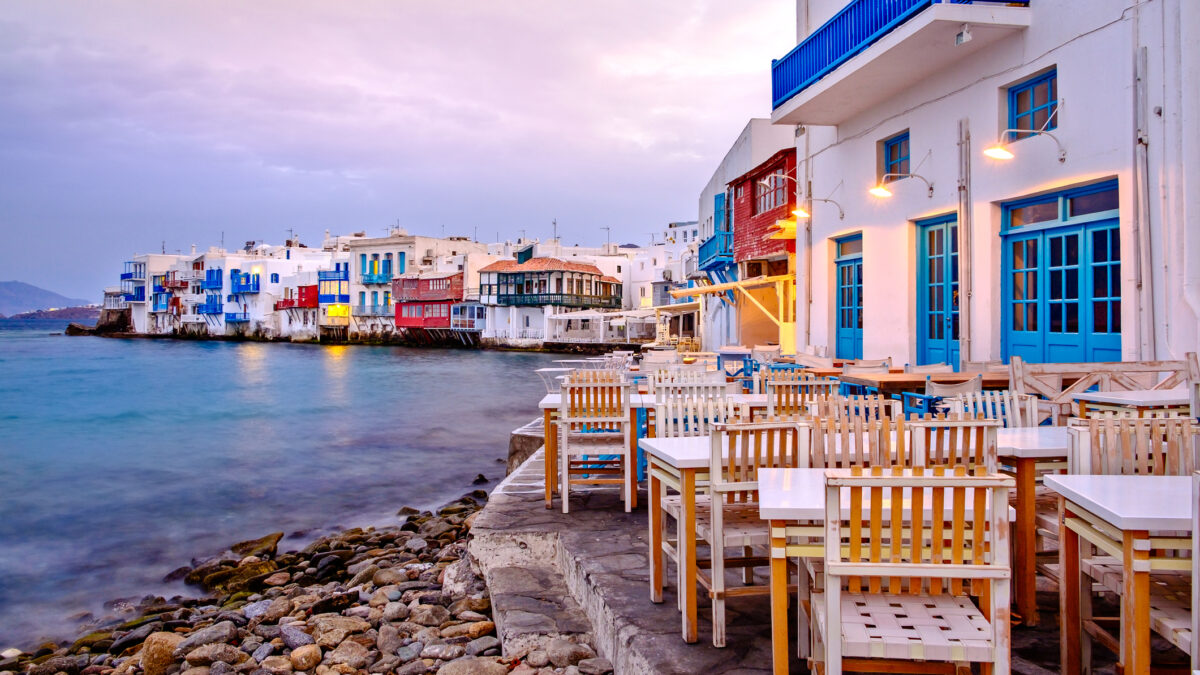The queen of the Cyclades and beyond, Mykonos established itself as a global brand long before Greece developed its mass tourism. Despite its proximity to neighbouring Delos, where rich archaeological finds attract lovers of history, Mykonos has provided limited but specific evidence (such as the Neolithic settlements at Ftelia and Divounia), while historical references to the island are likewise sparse. Nevertheless, Mykonos has a number of fascinating museums, such as the Archaeological Museum, Aegean Maritime Museum and Mykonos Folklore Museum. The island’s unique identity is found in its authentic Cycladic architecture and exotic beaches, many of which are among the most gorgeous in the Cyclades.
Visitors to the island are sure to remember its whitewashed houses, picturesque churches – the Panagia Paraportiani in the Kastro quarter stands out thanks to its unique architecture – the captains’ houses at Little Venice, and the blooming bougainvillea. The blue and white beauty of the Cyclades is on full display in the island’s Chora, with its freshly painted, labyrinthine alleyways. It has been said that the island’s inhabitants intentionally built their town in such a labyrinthine manner to protect themselves from pirates. Little Venice, Myli, Gialos and Matogiannia are some of the most photographed places on the island, while the unique village of Ano Mera is well worth a visit. Outside Chora, the island’s charm can be experienced in the crystal-clear waters of its numerous beaches, which exhibit a variety that’s sure to satisfy even the most demanding visitor.
Cuisine
While the island possesses a diverse culinary selection and hosts restaurant brands known the world over, Mykonos nevertheless also produces a plethora of local products and excellent traditional recipes, and there is no shortage of establishments where visitors can sample them.
Some of the island’s products include local cheeses (spicy kopanisti, mild tyrovolia and tart xinotyri), cured meats (louza and sausages), not to mention almond sweets with a lovely bitter almond aftertaste. Mykonos sweets worth sampling include tsimbita and fried rafiolia – dough-based sweets with local cheese, honey, orange and cinnamon – that are reminiscent of lychnarakia from Santorini. The latter especially are an ideal side dish for tyrovolia and are an excellent choice for a traditional Mykonos breakfast. Mykonos also has its own local pie recipes, such as its traditional kremmydopita (onion pie) and melopita (honey pie). In addition, meze widely consumed on the island include mostra – rusks with tomato and kopanisti cheese – and fennel fritters.
The ever-friendly locals often serve stewed game, seafood, and fish at family gatherings.
How to get there
Mykonos sits at the heart of the Cyclades and is serviced by ferry from the ports of Piraeus and Rafina, as well as by air.










